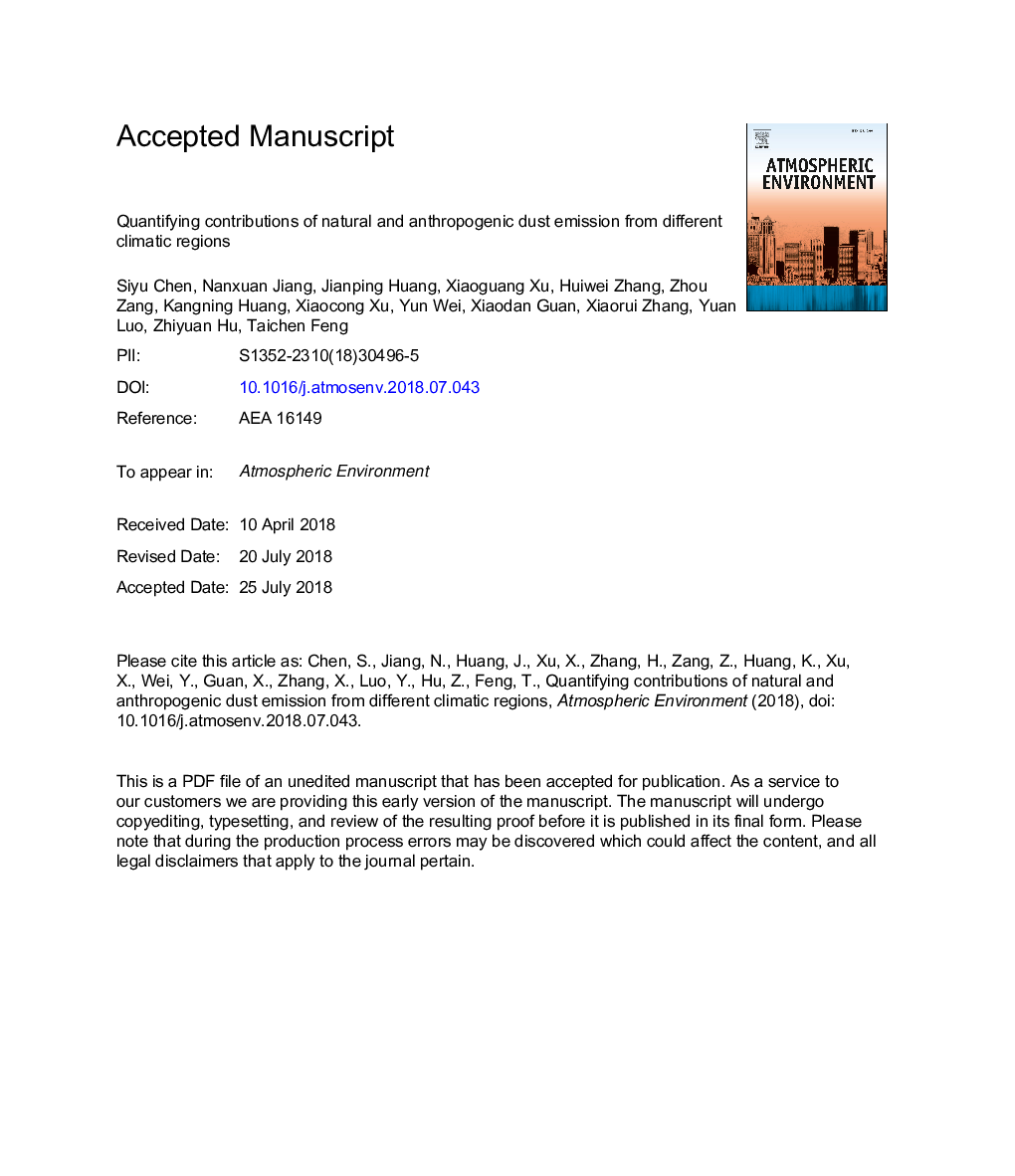| Article ID | Journal | Published Year | Pages | File Type |
|---|---|---|---|---|
| 8863380 | Atmospheric Environment | 2018 | 41 Pages |
Abstract
To quantitatively estimate the divergences in the natural and anthropogenic dust emission fluxes among different climatic regions, the total dust emissions at the global scale from 2007 to 2010 were simulated in this study. Despite the widely scattered anthropogenic dust distribution, the total area of potential anthropogenic dust sources was found slightly higher than that of natural dust sources. The anthropogenic dust distribution area was 1.61â¯Ãâ¯107â¯km2 in January and 1.54â¯Ãâ¯107â¯km2 in July, respectively. The natural dust sources contributed 81.0% of the global dust emissions and the anthropogenic contributed 19.0% of the residual. The natural and anthropogenic dust emission flux was 6.34â¯Â±â¯0.31â¯Î¼gâ¯mâ2â¯sâ1 and 1.01â¯Â±â¯0.07â¯Î¼gâ¯mâ2â¯sâ1, respectively. Especially, natural and anthropogenic dust emissions situated in different climatic regions. Natural dust emissions mainly located in hyper-arid and arid regions such as the Sahara, Arabian and Taklimakan Desert where dust emission fluxes range from 1 to 50â¯Î¼gâ¯mâ2â¯sâ1, accounted for 97.3% of natural dust emissions at the global scale. While anthropogenic dust emissions concentrate in semi-arid, sub-humid and humid regions and generally fluctuated between 0.1 and 10â¯Î¼gâ¯mâ2â¯sâ1. In addition, natural and anthropogenic dust proportions in semi-arid regions were the most complicated due to the complex land cover types, including grasslands, urban areas, croplands and open shrub lands, resulting in 42.99% of the anthropogenic dust emissions in semi-arid regions. The complex interplay of natural and anthropogenic dust emissions contributing to the total dust loadings may be a crucial factor enhanced the warming over semi-arid regions. This study provided confidence for the further investigation of the climatic impacts of natural and anthropogenic dust in different climatic regions under the background of global warming, especially the strengthening warming in semi-arid regions.
Keywords
Related Topics
Physical Sciences and Engineering
Earth and Planetary Sciences
Atmospheric Science
Authors
Siyu Chen, Nanxuan Jiang, Jianping Huang, Xiaoguang Xu, Huiwei Zhang, Zhou Zang, Kangning Huang, Xiaocong Xu, Yun Wei, Xiaodan Guan, Xiaorui Zhang, Yuan Luo, Zhiyuan Hu, Taichen Feng,
